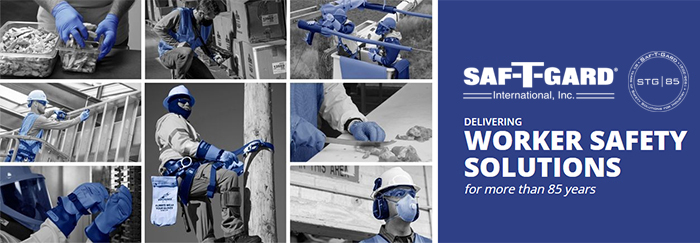|
Step up Your Safety with Savings on These COVID-19 Safety Essentials at Saf-T-Gard |
| |
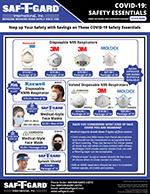
|
The first “P” in “PPE” stands for “Personal”, and never before has safety been more personal with the Omicron variant having reached unprecedented levels.
Hospitalizations soared to a record high in January 2022. While the numbers are starting to decline, we must remain hyper vigilant about safety, as prevention through the use of PPE is one of the best ways to continue to protect you and your workers.
|
| |
Rest assured, Saf-T-Gard International, Inc. has the essential safety supplies on hand (and with added savings) to help prevent the spread and support you and your employees during the Coronavirus outbreak, including the following:
Click here to shop our selection of COVID-19 Safety Essentials, or call customer service at 1-800-548-GARD (4273) today for more information or to place an order or with any additional questions on how we can assist you in your worker safety program.
|
| |
|
|
 |
Understanding Testing and Rating of PPE Rubber Insulating Gloves |
| |
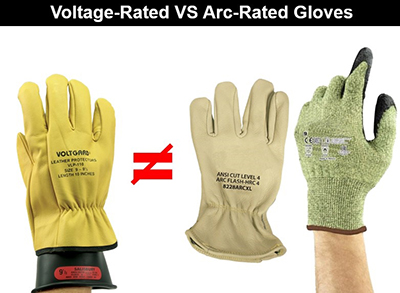
|
| |
Tested,
arc-rated, shock protection, class, AC, DC, ASTM, OSHA, and more – what do they
all mean?
Live-line
working at distribution voltages up to 34.5 kV AC requires the finest-quality
protective equipment to keep the line worker safe. In the United States, OSHA
specifically mandates the use of rubber insulating products and related tools
and equipment that has been manufactured and tested to specifications developed
by ASTM International, a consensus standards organization. Many ASTM standards
have also been approved as American National Standards and covered products are
often marked with a dual ANSI/ASTM label.
Users of
rubber insulating gloves, for example, are accustomed to seeing a color-coded
label indicating a voltage class (00 – 4) and a maximum usage voltage when
working on AC equipment. The specifications driving that class and voltage data
provide for a significant margin of safety. For example, gloves rated class 2
for working voltages up to 17,000 volts AC are 100% proof tested at 20,000
volts AC and samples of each production batch are tested to withstand at least 30,000
volts AC.
AC vs. DC
– A deep dive into the ASTM standards shows test voltages and maximum use
voltages for both AC and DC. While there is no fixed formula relating the AC
test and working voltage levels to DC test and working voltage levels, users
can choose either. The reasons for having both AC and DC testing are complex.
AC testing is both an electrical test and a physical test since the current is
passing through the material back-and-forth 60 times per second. This also
creates a corona generating ozone which is harmful to natural rubber. Among the
benefits of AC testing is that manufacturers all test their products using AC
and, most importantly, distribution voltages are AC so “test it as you use it”
makes sense.
Some
engineers postulate that DC testing of rubber insulating products is a purer
test because the DC will find the weakest spot in the rubber exclusive of the
physical effects of AC testing (above). In addition, DC testing does not create
ozone thus eliminating a source of potential damage to natural rubber products.
Of increasing interest is the “test it as you use it” approach to wearing
rubber insulating gloves (and other products) for protection against DC
energized circuits and equipment found in EV (electric vehicles including
hybrid), public transit systems, and renewable power generation.
But what
about those arc-rated gloves? Back in 2013 ASTM approved a test method for
determining arc ratings of gloves used for electrical arc flash protection.
Anywhere from 5 to 10 arc explosions occur every day in the United States, and
as many as 10 workers are killed or injured per day according to some past
research. Arc flash events are a clear and present danger. Exposure to their
intense heat for 1/10 of a second can cause a 2nd-degree burn. Temperatures of
205⁰ F will cause a 3rd-degree burn, leading to complete skin loss in the
exposed areas. A pressure wave blast from a high-amperage arc can travel
several feet with a force of up to 1,000 lbs. That’s enough to toss a victim
backwards, causing injury from falls and impact; it can also cause hearing
loss. Most often, when there is an arc flash hazard there is also a shock
hazard.
About
75% of arc flash incidents occur when a worker is near the equipment. NFPA
reports 2/3 of workers involved in arc flash incidents were injured when
companies failed to conduct an arc flash analysis for selecting PPE. A separate
study found 40% of electrical incidents involved 250 volts or less, so it isn’t
only high voltage that causes injuries. NFPA 70E details areas of protective
clothing sometimes neglected by electrical workers. Jackets and rainwear, worn
over arc-rated clothing should also be arc-rated. Underwear comprised of
meltable fibers such as polyester, nylon and spandex should not be worn.
Sleeves should be fastened at the wrists and shirts tucked into pants. The legs
of pants and sleeves of shirts should come completely down to the ankle and
wrist, forming total coverage when combined with voltage-rated gloves,
protective footwear, safety glasses, hearing protection and hardhats.
OSHA has
required compliance with arc protection standards since 2015. Employers must
calculate the incident heat energy of any potential electrical-arc hazard
exposures to employees and implement programs and systems based on the risk
assessment. NFPA 70E requires specific levels of PPE for various types and
ratings of electrical equipment. OSHA estimates that 80% of
electrically-related accidents and fatalities involving "Qualified
Persons" are caused by arc flash/ arc blast. NFPA 70E is updated every 2
years (2021 is the latest edition).
Click here to read the rest of the article.
|
| |
|
| |
Saf-T-Gard International, Inc. Celebrated 85th Anniversary of Bringing Workers Home Safety
|
| |

|
|
2021
marked the 85th anniversary for Saf-T-Gard
International, Inc., a family owned and operated global
supplier of industrial safety products now in its 4th generation of ownership.
The first "P" in "PPE" stands for "Personal", and
never before has safety been more personal than it is nowadays with the
outbreak of COVID-19 affecting the lives and livelihoods of everyone. No one
understands this better than Saf-T-Gard International, Inc. Since its
establishment in 1936, Saf-T-Gard has enabled on-the-job safety, compliance and
peace of mind for hundreds of thousands of workers and their families by
delivering superior safety products and solutions that protect against
work-related hazards and prevent serious injuries.
Saf-T-Gard has grown significantly since its humble, two-person factory loft
beginnings. Founded as Latex Glove Manufacturing Company by Leo and Lillian
Rivkin, the company began its operations in Chicago when the Rivkins acquired
equipment from a balloon company and used it to produce waterproof,
rubber-coated cotton gloves. They purchased cotton gloves, dipped them in the
latex rubber tanks, let them dry overnight, and sold them the next day. In the
1940s, as Chicago manufacturers geared up to support the American war efforts, Latex
Glove Company expanded its product offering as a full-line industrial glove
distributor.
The focus on occupational safety and health in the 1960s and 1970s lead to an
increased emphasis on providing a full line of personal protective equipment.
As such, Latex Glove Company began supplementing its legacy of hand protection
with industrial safety products from global suppliers, including protective
eyewear, respirators, hard hats, protective clothing and footwear, and first
aid kits and supplies to meet OSHA’s requirements. In 1979, Latex Glove Company
purchased a larger industrial building in Northbrook, Illinois, to position the
company for further growth and better customer service.
In the early 1980s, the Voltgard® project was launched as a small
test lab with the mission to develop the electrical testing and utility
industry business by providing the testing of rubber insulating products to
complement the sales of new products. Saf-T-Gard’s Voltgard®
Test Lab has grown to be the largest, independent,
NAIL4PET accredited test lab for rubber insulating products in the United
States and offers complete retesting and certification of rubber gloves,
sleeves, blankets, line hose, covers, dielectric footwear, jumper cables,
grounding sets, plastic guards, hot sticks, matting, hoods and hand tools – all
to applicable standards. Moreover, the Voltgard® Test Lab developed the Original
Rubber Goods Change-Out Program® – the
industry’s first managed rubber goods change-out program designed to minimize
out-of-service time and save money by offering customers complete solutions
from start to finish. No other test lab offers the Voltgard level of service.
Having experienced significant business growth, Saf-T-Gard moved to its current
location on Huehl Road in 1986. The new building was nearly double in size with
plenty of room for even greater expansion.
By 1989, the company's direction as a full-line, quality-oriented supplier of
safety products was clear, and therefore, Latex Glove Company changed its name
to Saf-T-Gard International, Inc. to reflect its dedication to a complete line
of worker safety products and personal protective equipment. Today, Saf-T-Gard
offers tens of thousands of products spanning the full range of personal
protective equipment and facility safety from the world’s
leading manufacturers in addition to Saf‑T‑Gard’s
exclusive brands. Saf-T-Gard serves customers in all 50 states and in more than
50 countries around the world. The company has received numerous awards,
including Illinois Family Business of the Year, United States Department of
Commerce President’s “E” Award for Export Excellence, AD Safety Network Gold
Star Distributor Award, and AD Safety Network Peak Performance Distributor
Award. Saf-T-Gard is an active member of the National Safety Council (NSC), the
International Safety Equipment Association (ISEA), the North American Meat
Institute (NAMI) Worker Safety Committee, the North American Independent
Laboratories for Protective Equipment Testing (NAIL4PET), the American Society
for Testing and Materials (ASTM), and AD Safety Network.
“Saf-T-Gard is 85 years strong, and our solid history is a testament to our
dedication, commitment and stability as a company,” said Richard Rivkin,
Chairman and CEO, Saf-T-Gard International, Inc. Loren Rivkin, President and
COO continues, “My great-grandparents started our company just after the Great
Depression. World War II ensued and my grandfather went off to war, returning
home with a Purple Heart and Silver Star, and then rejoined his parents’
company. Now we finish our 85th year, hopefully seeing the end of a two-year
global pandemic, and Saf-T-Gard is still here and strong, bringing workers home
safely.”
|
| |
|
| |
Introducing the New Saf-T-Gard® Voltgard® V-APR0 1000 Volt (Class 0) Insulating Apron |
| |
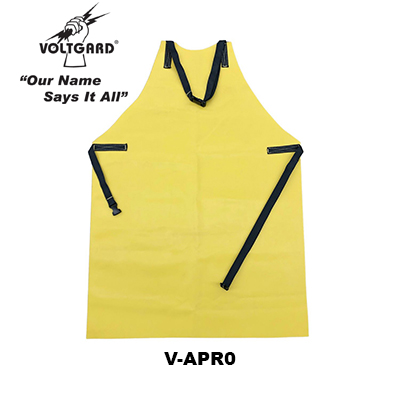
|
| |
Saf-T-Gard
has expanded its Voltgard line of electrical safety products with the arrival
of the Saf-T-Gard®
Voltgard® V-APR0 1000 Volt (Class 0) Insulating Apron.
Designed to provide workers with an additional layer of protection from low
voltage electrical hazards, the Saf-T-Gard®
Voltgard® V-APR0 1000 Volt (Class 0) Insulating Apron is
ideal for use where there is a possibility of accidental contact with energized
equipment or lines.
Additional
features and benefits include the following:
- Made
from a high-strength reinforced Type II rubber material
- Includes
two (2) Kevlar® bib straps and two (2) Kevlar® waist
straps with nonmetallic buckles
- Adjustable
straps can be buckled around the back and around the neck which gives wearers a
comfortable and supportive fit
- All the
straps are attached with reinforced stitching and Kevlar® thread
- Good for
up to 1000 VAC
- Easy to
identify yellow color is highly visible in the work area
- Designed
for situations where there is a possibility of accidental contact with
energized equipment or lines
- Meets
ASTM F2320 standards
- Measures
42” from the top of the bib and has a full width of 30” to wrap around the
front
- One size
fits more wearers
- Sold individually
As a
leading manufacturer and distributor of rubber insulating products, arc flash
safety clothing and kits, grounding equipment and testing services, the Voltgard®
division of Saf-T-Gard International, Inc. is dedicated to serving those where
worker safety and protection from electrical current are critically important.
Click here to shop
the Saf-T-Gard® Voltgard® V-APR0 1000 Volt (Class 0) Insulating Apron online, or
call customer service at 1-800-548-GARD (4273) today for more
information or to place an order.
|
| |
|
| |
February is American Heart Month |
| |
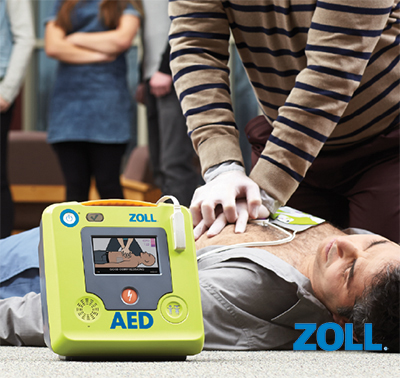
|
| |
Since
1964, Americans have recognized the importance of heart health each February
with American Heart Month.
Every
year, more than 350,000 people suffer out-of-hospital sudden cardiac arrest (OHCA)
in the United States. Of those victims, only about 10% survive according to the
American Heart Association. When a person suffers SCA, they collapse suddenly
and become non-responsive. The heart stops beating regularly, and the brain is
deprived of oxygen. Without intervention, victims of cardiac arrest can die in minutes.
If a person collapses suddenly and is unresponsive, they should be treated with
both high-quality CPR and an AED. Performing high-quality CPR helps to
circulate blood and oxygen to the brain and vital organs.
The
depth and rate of compressions performed during CPR can play a pivotal role in
a victim’s chance of survival. According to the American Heart Association,
compressions should be administered at a rate of 100-120 compressions per
minute and a depth of 2 - 2.4 inches for the average adult. A helpful reminder
is “Push hard and fast!” If you witness someone collapse and become
unresponsive, call 911 immediately and perform CPR until help arrives. If an
AED is available, ask a bystander to bring it, and follow the instructions
included with the device to place it on the victim. The AED will analyze the
victim’s heart rhythm and determine whether a potentially lifesaving shock is
needed. The AHA states that CPR and use of an AED while medical professionals are
en route can directly impact an SCA victim’s chance of survival. For every
minute that passes without CPR, an SCA victim’s chance of survival drops by
7-10%.
Please
help spread CPR and AED awareness during American Heart Month. Every second
counts, and you never know when you might need to help save a life!
When you’re ready to purchase, Saf-T-Gard
offers a wide variety of ZOLL AED Plus® packages including
semi-automatic and fully-automatic options.
Only
ZOLL’s AED Plus® is equipped with Real CPR Help® technology, giving
the rescuer real-time feedback on the depth and rate of chest compressions
during CPR. The sensor in the pads lets the AED see each chest compression and
guides the rescuer, with prompts and a real-time bar gauge, to the recommended
depth and rate of compressions. The ZOLL AED Plus® is available in
semi-automatic and fully-automatic versions, and each package includes a ZOLL
AED Plus® with AED cover, an adult electrode pad (CPR-D-padz®),
(1) sleeve of lithium 123A batteries, a medical prescription and a soft
carrying case.
Additional
features and benefits include the following:
- Novel
electrode design delivers a five-year shelf life and fits 99% of the
population’s chest anatomy
- Pull-tabs
expose the conductive gel on each pad only when it is in direct contact with
the skin, limiting the chance of gel contamination
- CPR-D-padz®
meet applicable ANSI/AAMI/ISO DF-39-1993 requirements and offer clear
anatomical placement illustrations as well as a CPR hand positioning landmark
and comes complete with a rescue accessory package, including a barrier mask,
razor, scissors, disposable gloves and a towelette
- Display
screen presents the elapsed time and number of shocks delivered
- Back-lit
display screen provides simultaneous text with every audio prompt and a circle
of lighted graphical icons that show what to do
A
section of the ZOLL AED Plus® part numbers are as follows:
- 8000-00-4000-01 - AED Plus®
Semi-Automatic Package with Medical Prescription
- 8000-00-4003-01
- AED Plus® Semi-Automatic Package with PlusTrac Professional1
- 8000-00-4004-01
- AED Plus® Semi-Automatic Package with PlusTrac Professional5
- 8000-00-4007-01 - AED Plus®
Fully-Automatic Package with Medical Prescription
- 8000-00-4010-01 - AED Plus®
Fully-Automatic Package with PlusTrac Professional1
- 8000-00-4011-01 - AED Plus®
Fully-Automatic Package with PlusTrac Professional5
Click here to shop
the ZOLL AEDs online, or call customer service at 1-800-548-GARD (4273) today for more information or to place an
order.
|
| |
|
| |

|
Watch the FREE Are Your Gloves up to the Challenge? Assess, Test, Select the Best ON DEMAND Webinar Sponsored by Radians Today |
| |
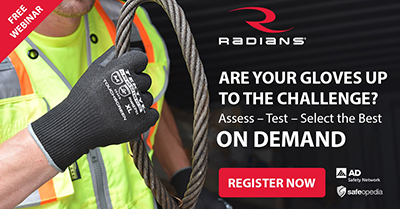
|
| |
Join
Dave Larimer and Justin Ladd from Radians as they walk you through how to keep
your hands safe in a
variety of different situations. Choosing the right protection for your hands
is usually driven by 5 attributes:
fit and comfort, protection, grip, dexterity, and durability useful life. If
all workers, from medical
to industrial and everything in between, would just wear gloves, then more than
1 million hospital
emergency visits by U.S. workers per year could be avoided.
The key
challenges discussed during this session include:
- Fit /
Comfort – Improper fit causes additional hazards
- Protection
/ Cut Level – Too much? Not enough? Do you know how much you need?
- Grip /
Dexterity – Does the task you’re doing require just a little more?
- Durability
/ Useful Life – Is your team throwing away gloves after every shift? Why?
- Cost –
Total Cost of Ownership – The full picture
Click here to register, and watch
the FREE webinar ON DEMAND today.
|
|
|
|
|

|
|
| Face Coverings 101: Key Differences Between Masks and N95 Respirators |
|
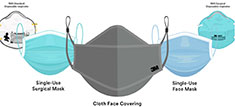
|
|
|
Before
the coronavirus (COVID-19) pandemic, you probably never considered the
differences between a non-medical cloth face covering, a surgical mask and an
N95 respirator. COVID-19 has created a new reality where face coverings
continue to be a part of our daily life.
Click here to
learn more about different types of face coverings, masks, and respirators and
what to consider when deciding how you can help protect yourself and others.
|
|
| |
|
| Shop @ Saftgard.com - The Smart, Simple and Speedy Way to Shop for Safety Online Today! |
|

|
|
|
Saftgard.com makes it easier than ever for visitors to find exactly what they are looking for by utilizing a guided navigation layout with a fully-optimized “smart” search engine. The responsive design enables use and access to more than 6,000 products with enhanced product content and imagery on your PC, smart phone or tablet.
Moreover, existing Saf-T-Gard customers can link their account to a new Saftgard.com web login to review ALL past orders and invoices, create a “wish list” of favorite items, save carts to simplify the ordering/reordering process and so much more! Buyers without an existing Saf-T-Gard account can register for one online, or they can still search, browse and order on Saftgard.com without a Saf-T-Gard account.
We invite you to spend a few minutes at Saftgard.com, and if you haven't already, please register for an account to enable online ordering.
Click here for a shortcut to the registration page, and click here for detailed instructions on how to link your Saf-T-Gard account to a Saftgard.com web login.
|
|
|
|
|
Visit with Saf-T-Gard
|
|

|
|
|
Hazards exist in every workplace. Common examples include slips,
trips, falls, exposure to loud noises, working from heights, vibrations and
unguarded machinery. The best way to protect your employees is to recognize the
hazards that exist on the job, and control them by utilizing the appropriate
personal protective equipment (PPE) for the application.
This is where Saf-T-Gard can
help! We've been bringing workers home safely since 1936 with our finest
industrial safety products and PPE, and we can do the same for you. Stop by our
booth at the any of the following trade shows to check out our comprehensive
selection of safety products and services that directly address every workplace
safety hazard.
Wisconsin Safety Council Annual Conference - Tuesday, April 12, 2022, from 7:30 a.m. to 4:00 p.m. and Wednesday, April 13, 2022,
from 7:30 a.m. to 1:30 p.m., Kalahari Resort, Wisconsin Dells, Wisconsin, Booth
#160
IEEE PES T&D Conference - Tuesday,
April 26, 2022, from 10:00 a.m. to 5:00 p.m., Wednesday, April 27, 2022, from
10:00 a.m. to 6:00 p.m. and Thursday, April 28, 2022, from 10:00 a.m. to 3:00
p.m., Ernest N. Memorial Convention Center, New Orleans, Louisiana, Booth #4511
ASSP Safety - Monday, June 27, 2022, from 9:00 a.m. to 4:00 p.m., Tuesday, June 28, 2022, from 9:00 a.m. to 4:15 p.m. and Wednesday, June 29, 2022, from 8:30 a.m. to 12:30 p.m., McCormick Place, Chicago, Illinois, Booth #1846
International
Lineman’s Rodeo - Wednesday, October 12, 2022, from 8:00 a.m. to 4:00 p.m., Thursday, October 13, 2022, from 12:00 p.m. to 5:00
p.m. and Friday, October 14, 2022, from 9:00 a.m. to 3:00 p.m., Overland Park
Convention Center, Overland Park, Kansas, Booth #217
|
|
| |
|
Five Safety Tips
|
|
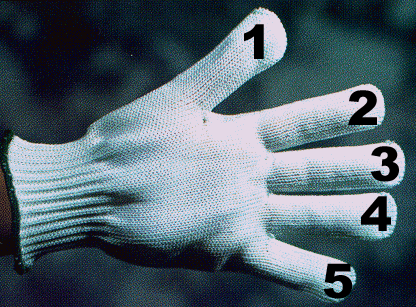
|
|
|
1. TAKE A DEEP BREATH - Air-purifying
respirators do not supply oxygen and must not be used in atmospheres with less
than 19.5% oxygen
2. WHAT THE FLOCK? - Chemical-resistant
nitrile, neoprene, and rubber gloves are available with comfortable cotton
flock linings that can absorb perspiration
3. ABSOLUTELY SHOCKING
- If your maintenance staff works on potentially energized circuits,
they need low voltage rubber insulating gloves
4. DON'T FALL FOR THIS - OSHA
requires a personal fall arrest system be used anytime a worker is working 6
feet or more above a lower level
5. CAN IT - Safety cans are
available in a variety of materials and sizes for safe transfer of hazardous
liquids
|
|
| |
|
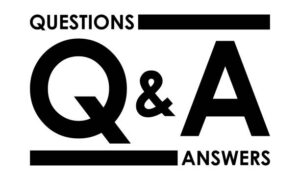
|
|

|
|
|
Question - Is a "fu-man-chu" acceptable to
have and use a facepiece?
Answer - Tight-fitting facepiece respirators
must not be worn by employees who have facial hair that comes between the
sealing surface of the facepiece and the face or that interferes with valve
function. Respirators that do not rely on a tight face seal, such as hoods or
helmets, may be used by bearded individuals. It does not matter if hair is
allowed to grow on other areas of the face if it does not protrude under the
respirator seal. Accordingly, mustaches, sideburns, and small goatees that are
trimmed so that no hair underlies the seal of the respirator present no hazard
and do not violate [1910.134(g)(1)(i)(A)].
However,
the use of a self-contained breathing apparatus (SCBA) is not acceptable for
bearded employees under emergency conditions. Since the SCBA is used in unknown
concentrations for unspecified lengths of time, maximum protection must be
achieved when the SCBAs are worn. The beard growth can significantly reduce the
service life of the air cylinder on the SCBA which could restrict the
performance in the emergency operation. The SCBA wearer can
"overbreathe" when moderately heavy to heavy workloads are performed.
If there is a leak caused by the beard, the air contaminant could be pulled
inside the facepiece.
Furthermore, the beard can interfere with the sealing of
the exhalation valve and shortening the service life of the air supply. For
emergency use, there is an escape hood with a continuous flow of air and a
fifteen-minute service life which usually can be worn by bearded employees.
Respirators of this type that have been approved by the National Institute for
Occupational Safety and Health are available on the market.
|
|
| |
|
| Saf-T-Gard Spotlight |
|

|
|
|
Jack Walker is
Saf-T-Gard’s Key Accounts Safety Specialist, and he joined the company in March
2017.
What Jack likes
about Saf-T-Gard:
“I
really enjoy all of my co-workers. Everyone has a great deal of knowledge and
experience and are experts at their crafts. No matter what needs to get done,
everyone joins together in a team effort to make sure that our customer’s needs
are met well above their expectations. Being new to the company, I was welcomed
with open arms from everyone. There have been many individuals who have gone
above and beyond their duties to make sure that I am comfortable and well taken
care of.”
What makes Jack’s
day:
"The
thing that really makes my day is when we are able to solve a customer’s
problem. Whether that is big or small, helping keep our customers safe and
happy is what we are all about. Most of the times that is working with many
internal business partners to make that happen. Oh, and a good cup of coffee,
or two……"
Jack’s outside
interests:
"There is
nothing better after a long day of work then heading home to see my wife and
three children. Stephanie is my wife, we have been married for more than 6
years and have been together for more than 11 years. Our children are Charlie,
Ben and Molly. We live in Naperville, IL. We spend a lot of time together and
with our family. Outside of family time, I love sports, particularly baseball.
After I was done playing baseball, I began my coaching journey back in 2011.
Currently, I am an assistant baseball coach at Benedictine University in Lisle,
IL. My primary focus is working with infielders and hitters. I am also the
first base coach. As much as I loved to play and compete, there is nothing
better than watching an individual or your team succeed after putting in many
hours of work."
|
|
| |
|
 Factoid Factoid |
|
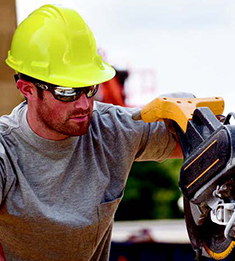
|
|
|
OSHA has previously
maintained the position that hard hats used by employees must be worn with the
bill facing forward unless the hard hat manufacturer certifies that the bill
facing back meets current ANSI Z89.1 standards. Does OSHA still adhere to this
interpretation?
Section 1926.100(a)
provides: Employees working in areas where there is a possible danger of head
injury from impact, or from flying objects, or from electrical shock and
[electrical] burns, shall be protected by protective helmets.
Section
1926.100(b) provides: Helmets for the protection of employees against impact
and penetration of falling and flying objects shall meet the specifications
contained in American National Standards Institute, Z89.1..., Safety
Requirements for Industrial Head Protection.1
In 1992, OSHA stated: ANSI
only tests and certifies hard hats to be worn with the bill forward [;] hard
hats worn with the bill to the rear would not be considered reliable protection
and would not meet the requirements of 29 CFR 1926.100(a) and (b) unless the
hard hat manufacturer certifies that this practice meets the ANSI Z89.1
requirements.
This continues to be OSHA's interpretation of this standard.
Additionally, note that a manufacturer may certify that it would be acceptable
to wear the hard hat with the bill to the rear when the hard hat liner is
turned/reversed.
|
|
| |
|
| As I See It |
|

|
|
|
It is
February 2022, and with apologies to my high school English teachers, we’d like
to explore shoulda and coulda.
If you're reading this, you’re probably involved in some aspect of industrial safety,
either for your employer, your company, or yourself. So unless OSHA is a
foreign language, you know the shoulda (things you should be
doing) and most of them are probably MUSTS, not just shoulda.
It’s when problems like injuries or accidents occur that the shoulda
gains the spotlight. For example, we shoulda had safety mirrors
on the warehouse or we shoulda required better hearing protection
or we shoulda had those rubber insulating gloves tested before
use. Certainly nobody purposely violates a life-threatening rule, but
recognizing the shoulda in hindsight is no excuse.
Besides
the MUSTS, some shouldas are within the supervisor’s discretion
or choice based on experience, training, and analysis and consideration of the
specific situation. So an obvious shoulda is that supervisors and
managers should have regular refresher training that they can impact to their
teams.
And
that’s where some of the couldas come in, often as an explanation
or excuse for why something happened or why a specific choice was made. For
example, I coulda waited until a co-worker was available to
assist, or I coulda performed my gas detector bump test daily
before use.
Maybe
the shoulda and coulda considerations are just
reminders of common sense, but that’s why we train for emergencies – both to
prevent and to respond professionally.
And
here are some easy choices – you coulda called Saf-T-Gard, you shoulda
called Saf-T-Gard, and Saf-T-Gard is ready to help. Call or visit www.saftgard.com today. We are Saf-T-Gard International - Bringing Workers Home Safely
Since 1936.
Sincerely,
Richard A. Rivkin, Saf-T-Gard CEO and Chairman of the Board
|
|
|
